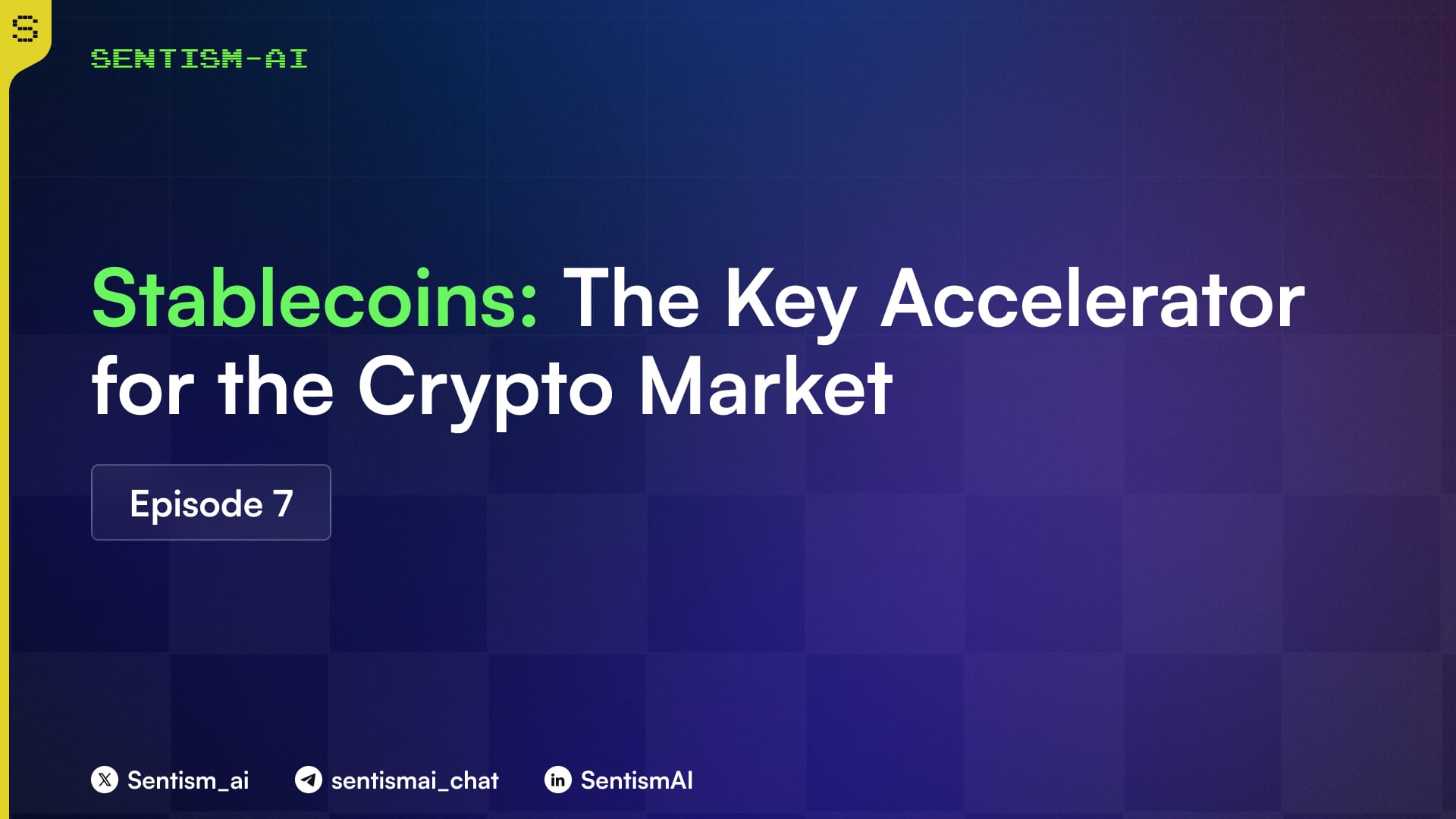Stablecoins: The Key Accelerator for the Crypto Market

While all eyes are on Bitcoin surpassing $120,000 or Ethereum gearing up to claim the throne via ETFs, a silent hero is building the foundation for the next wave in the market: stablecoins.
August 2025 has witnessed an unprecedented explosion in stablecoins - not just in scale, but in real-world applications, regulatory frameworks, and involvement from global tech-finance giants.
1. What Are Stablecoins and Why Are They Important?
Stablecoins are digital assets designed to maintain a stable value, typically pegged 1:1 to fiat currencies like USD, EUR, AUD, or gold. Due to their stability, stablecoins play three strategic roles in the crypto market:
- A safe haven during market volatility.
- A bridge between traditional finance and DeFi.
- A value reference for pricing, payments, and lending.
2. The Stablecoin Market Landscape
Market Capitalization: $230–250 billion, representing a significant portion of crypto market liquidity. According to Messari's "State of Stablecoins" report, the total market cap hit a new all-time high of $252.7 billion as of July 8, 2025, up 0.8% week-over-week and 2.0% month-over-month, with a 53% year-over-year increase from $160 billion in June 2024 to $245 billion in May 2025.
Top Stablecoins: USDT, USDC, DAI, FDUSD, and newcomers like AUDD (on Hedera), FIUSD (Fiserv + Circle), and mUSD (MetaMask). Messari data highlights USDT and USDC dominating, with the market surpassing $200 billion driven by USD-backed demand.
Real Growth: News and cross-border payment applications related to stablecoins surged 186% compared to the same period in 2024.
Potential: Experts forecast stablecoin capitalization could reach $2 trillion in the next three years, per Messari projections on enterprise adoption and global liquidity expansion.
3. Factors Indicating Stablecoins Will Drive the Crypto Industry
3.1 Clear Regulatory Frameworks – Boosting Confidence
US: The GENIUS Act (2025) mandates 1:1 backing and transparent reserves for stablecoins. Messari's 2024 industry summary notes a friendlier US regulatory environment as a pivotal shift.
EU: MiCA is fully operational, licensing stablecoin issuance (ART, EMT).
Hong Kong, UAE, Bahrain: Incorporating stablecoins into legal frameworks for payments and trading.
Impact: Clear regulations make stablecoins reliable financial tools, attracting institutional capital. Recent news underscores this, such as Societe Generale becoming the first major bank to launch a dollar-pegged stablecoin, and big banks exploring joint stablecoins for venturing into crypto.
3.2 Cross-Border Applications – Breaking Geographic Barriers
Companies like MoneyGram and Western Union use stablecoins to cut remittance fees.
International payments now take seconds instead of days, with fees as low as $0.001 (Hedera's AUDD).
Stripe has launched stablecoin accounts in 101 countries, supporting USDC, USDP, and USDG, as Bridge introduces USDB.
Impact: Stablecoins turn crypto into practical payment solutions beyond speculation. Headlines reflect this trend: Uber considers stablecoins for cross-border transfers, Stripe rolls out accounts in 101 countries, and JPMorgan advances with its stablecoin-like token JPMD.
3.3 Infrastructure and New Products – Technological Leap
Hedera: AUDD (Australian Dollar) via Hedera Stablecoin Studio - low fees, high speed, eco-friendly.
Stripe: Integrates stablecoins into global payments, partnering with Visa for linked consumer cards.
Circle: Launches Arc, a layer-1 blockchain for stablecoin finance; expands USDC to $65.2 billion in circulation.
Impact: As major firms integrate stablecoins, crypto user bases will surge without needing market re-education. Supporting news includes a new global dollar stablecoin backed by Robinhood, Kraken, Paxos, and others; Meta looking to enter the red-hot stablecoin market; and Revolut joining PayPal in issuing stablecoins.
3.4 Integration with DeFi and RWA – Unlocking Global Assets
Stablecoins serve as core collateral in DeFi for stable lending, borrowing, and yield farming.
Combined with RWA tokenization: Buy real estate, bonds, or gold using stablecoins.
Future: Hybrid models of CBDCs + private stablecoins for global payments.
Impact: Integrates crypto into traditional finance without conflict. Big Tech involvement amplifies this - Walmart and Amazon exploring their own stablecoins, Apple, X, and Airbnb among firms eyeing crypto adoption - to divert payments from banks.
4. Vision for 2025–2030: Stablecoins as the "Internet of Money"
If Bitcoin is "digital gold," stablecoins will become the global system for payments and value storage:
- Users: Fast, cheap payments, savings, and transfers.
- Businesses: Accounting, payroll, international trade.
- Governments: Combining CBDCs with private stablecoins for interoperability.
Once this infrastructure matures, stablecoins will not only fuel crypto growth but redefine global finance.
Conclusion
August 2025 marks a turning point: Stablecoins are no longer auxiliary tokens but the core growth engine of the crypto industry. Backed by giants like Hedera, Stripe, and Circle - plus emerging players from news like JPMorgan's JPMD and joint bank ventures - stablecoins will transform crypto from a digital asset market into a global digital economy.
Website | Whitepaper | Telegram | X - SentismAI | X - Zally | Telegram Mini App | LaunchOn

